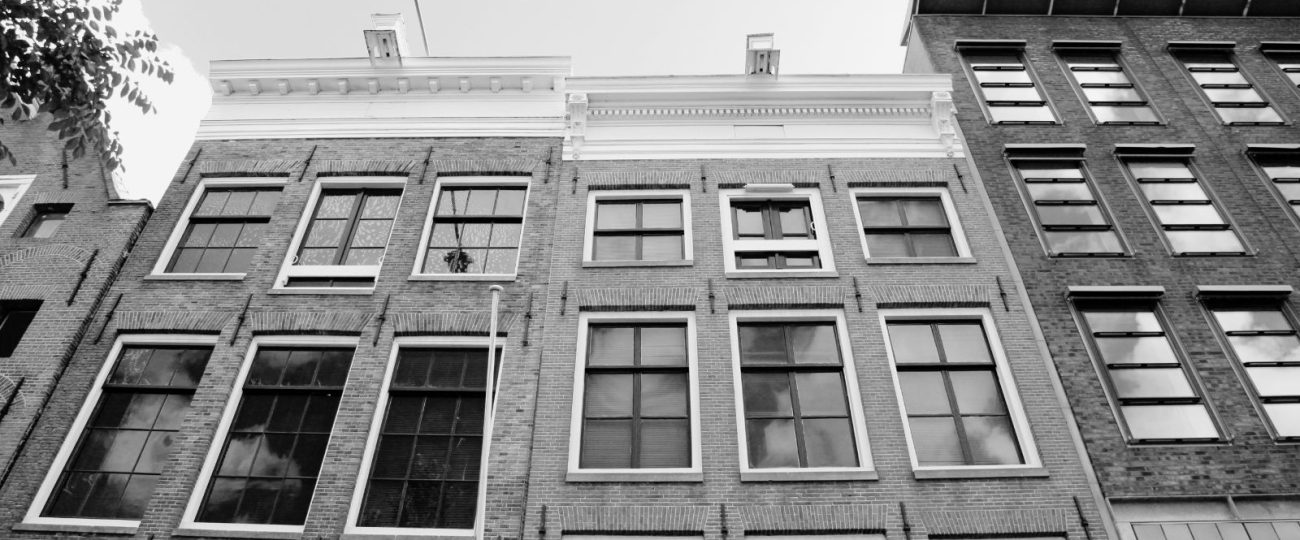What Happened On August 4th?
On August 4, 1944, the Sicherheitsdienst (SD) captured Anne Frank, her family, and their fellow hiders in the Secret Annex. The raid began around 10:30 a.m. at Prinsengracht 263 in Amsterdam, where the Frank family had hidden for over two years.
SS Hauptscharführer Karl Silberbauer led the arrest team. They first questioned the warehouse employees below the annex. On the first floor, they encountered office staff, including Miep Gies, who later recalled the terrifying moment a short man pointed a revolver at her. The officers then moved to the upper floors, searching the storeroom and eventually discovering the revolving bookcase that concealed the entrance to the Secret Annex.
The eight people in hiding, including Anne, her sister Margot, her parents Otto and Edith, the van Pels family, and Fritz Pfeffer, faced a sudden and shocking end to their concealed life. Otto Frank described how the intruders burst into the room with guns drawn. They had to quickly gather their belongings as Silberbauer emptied Otto’s briefcase, scattering Anne’s diary papers on the floor.
By around 1 p.m., the Gestapo had arrested the Franks and their helpers, Johannes Kleiman and Victor Kugler. The SD headquarters interrogated the detainees, where Otto Frank noted the officers’ keen interest in hidden valuables, questioning them about jewelry and money.
The next day, authorities transferred the group to the House of Detention in Amsterdam and then transported them to Westerbork transit camp on August 8, 1944. From there, they deported the group to Auschwitz on September 3, 1944, in the last transport from Westerbork to the infamous camp. Anne and Margot were later moved to Bergen-Belsen, where they perished in early 1945.
Before The Arrest
Anne Frank’s family went into hiding on July 6, 1942, to escape the escalating anti-Jewish measures in Nazi-occupied Netherlands. They were joined by the van Pels family and later by Fritz Pfeffer. The annex, located behind Otto Frank’s business premises, became their secret refuge, supported by Otto’s employees who risked their lives to bring food and supplies.
Throughout their time in hiding, Anne chronicled their experiences in her diary, offering a poignant insight into their daily lives, fears, and hopes. Her writings have since become a testament to the human spirit in the face of unimaginable hardship.
Life In The Secret Annex
Living in the Secret Annex brought constant fear of discovery, but the group found solace in small routines. Anne described in her diary how they celebrated holidays, managed their limited food supply, and dealt with the tensions that inevitably arose from living in such close quarters. Despite the stress, the families tried to maintain some normalcy. Anne and Margot continued their studies, with Anne expressing her desire to become a writer.
The Annex was small and cramped, with only a few rooms shared by all eight occupants. The residents had to remain completely silent during the day to avoid detection by the warehouse workers below. Blackout curtains covered the windows, and the use of water was restricted during working hours.
Anne wrote about the sounds that haunted them daily—the footsteps of people passing by, the bells of Westerkerk, and the fear-inducing sirens. These small details in her diary provide a vivid picture of their hidden life. The fear of being discovered never left them, as Anne frequently mentioned in her diary entries.
The Discovery
The SD team included Dutch detectives who assisted the Nazis. This team discovered the annex by sheer luck during a thorough search of the building. Silberbauer’s attitude shifted when he learned that Otto Frank had served as a reserve lieutenant in the German army during World War I. Despite this, he proceeded with the arrest.
The circumstances leading to the discovery of the Secret Annex remain unclear. While betrayal is often cited as the cause, no definitive evidence has been found. Theories suggest that the SD might have been investigating other illegal activities in the building, such as labor violations or the trade of ration coupons, when they stumbled upon the hidden annex.
The Aftermath
After the arrest, the Franks and their companions went to the Westerbork transit camp. At Westerbork, they lived in the punishment barracks because they had been arrested while in hiding. They were forced to dismantle batteries, a dangerous and unhealthy task due to the exposure to toxic chemicals. Despite the dire circumstances, Anne’s spirits were occasionally lifted when she encountered other young people at the camp.
In September 1944, they deported them to Auschwitz. The journey took three days in overcrowded, inhumane conditions. Upon arrival, men and women were separated. Otto Frank stayed in Auschwitz, while Anne, Margot, and Edith went to the women’s camp. Conditions were brutal, with forced labor, inadequate food, and disease.
In October 1944, Anne and Margot were transferred to Bergen-Belsen concentration camp. Both sisters died of typhus in March 1945. Edith Frank died in Auschwitz, but Otto Frank survived and liberated by Soviet troops in January 1945. Otto Frank later described how he learned about his daughters’ deaths from other survivors, adding a deeply personal perspective to the tragedy.

The Preservation Of Anne’s Diary
Miep Gies found Anne’s diary and other writings scattered on the annex floor after the arrest. She kept them safe, hoping to return them to Anne. After learning of Anne’s death, she gave the diary to Otto Frank. He published it in 1947 under the title “Het Achterhuis” (“The Secret Annex”). The diary became known worldwide as “The Diary of a Young Girl,” educating millions about the Holocaust. It has since been translated into over 70 languages, becoming one of the most poignant accounts of the Holocaust and a symbol of resilience in the face of oppression.
Anne’s original diary, along with her revisions and other writings, is preserved at the Anne Frank House in Amsterdam, which has been turned into a museum. This site attracts over a million visitors annually. The museum includes personal items, such as Anne’s school books and photographs of the family, providing deeper insights into their lives.





